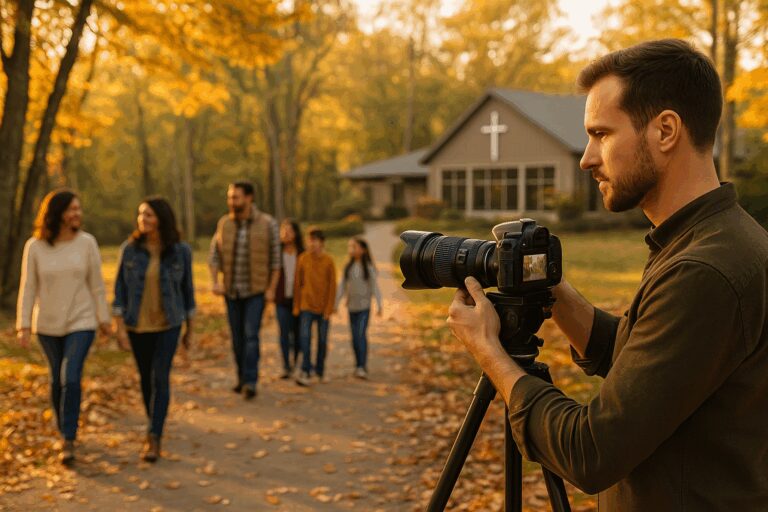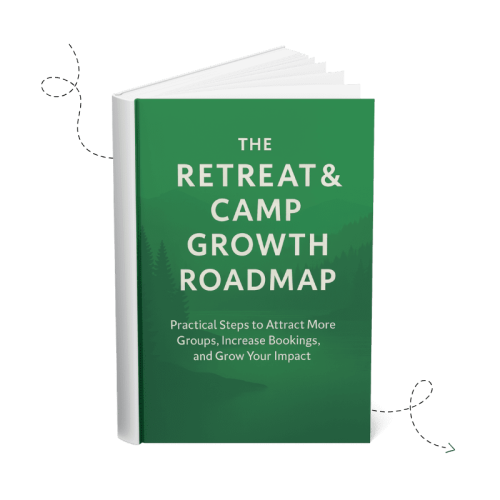Retreat & Camp Growth Roadmap Focus Area: Deploy Video Ads
Introduction
Video advertising is one of the most powerful ways to grow awareness of your retreat center or camp. It combines storytelling with visuals to communicate your message, stir emotions, and invite guests into your space—before they ever set foot on your property. YouTube is the leading platform for video ads, but opportunities now extend to social media platforms like Facebook and Instagram, as well as streaming services like Hulu. In this article, you’ll learn how to use video ads to build awareness, reach new audiences, and increase engagement using practical steps tailored for retreat and camp ministries.
Why This Focus Area Matters
Video allows you to show, not just tell. When potential guests see your facilities, hear from past participants, and experience the atmosphere through video, they connect more deeply. This kind of engagement is hard to achieve with text or images alone. It also helps you:
- Invite new audiences into your story with hospitality
- Stand out in a crowded digital world
- Multiply the reach of your message beyond word-of-mouth
- Use resources wisely by focusing on high-impact outreach
Deploying video ads is more than a marketing tactic—it’s an act of ministry. You’re extending an invitation into sacred space, using tools of the digital age to welcome people into a place of rest, reflection, and transformation. It’s faithful stewardship that multiplies your impact and reaches beyond your current circle.
Is This an Area You Need to Focus on Right Now?
Ask yourself:
- Are we well-known in our local or regional community?
- Are we currently running any brand-level advertising campaigns?
- Do we rely primarily on word-of-mouth or referrals?
- Are we using video effectively to showcase what we offer?
- Is our brand well known across our target audience?
If you answered “no” to any of these, this focus area can help you bring greater clarity, alignment, and impact to your outreach.
Putting This Focus Area into Practice
Choose the Right Platform
Before you begin creating your video ad, it’s important to understand where your audience is and how to reach them most effectively. Choosing the right platform ensures that your message shows up in the right places, at the right times, for the right people. Different platforms offer different strengths, and selecting a mix that fits your goals can maximize your impact without wasting time or money.
There are three primary types of video ad placements to consider:
- YouTube Ads: YouTube offers one of the largest audiences and high-intent engagement, making it an excellent primary platform for awareness campaigns. These ads are managed through Google Ads, which provides robust targeting, performance tracking, and budget controls.
- Social Media Video Ads: Facebook and Instagram are ideal for reaching community-minded audiences and promoting seasonal events. These ads are created and managed through the Meta Ads platform, which allows you to target based on interests, location, behaviors, and more.
- Streaming Video and TV Placements: Platforms like Hulu, Roku, and other streaming services allow you to place video ads in front of viewers watching TV-like content. These placements are typically managed through programmatic advertising platforms. Solutions like Vibe Marketing allow you to plan, launch, and track these campaigns across various channels from one central dashboard—a big help for small teams.
Choosing the right mix depends on your audience, goals, and budget. Many successful campaigns begin with YouTube, then expand to social and streaming as results and resources grow. If you’re not sure where to begin, start with one platform and learn as you go.
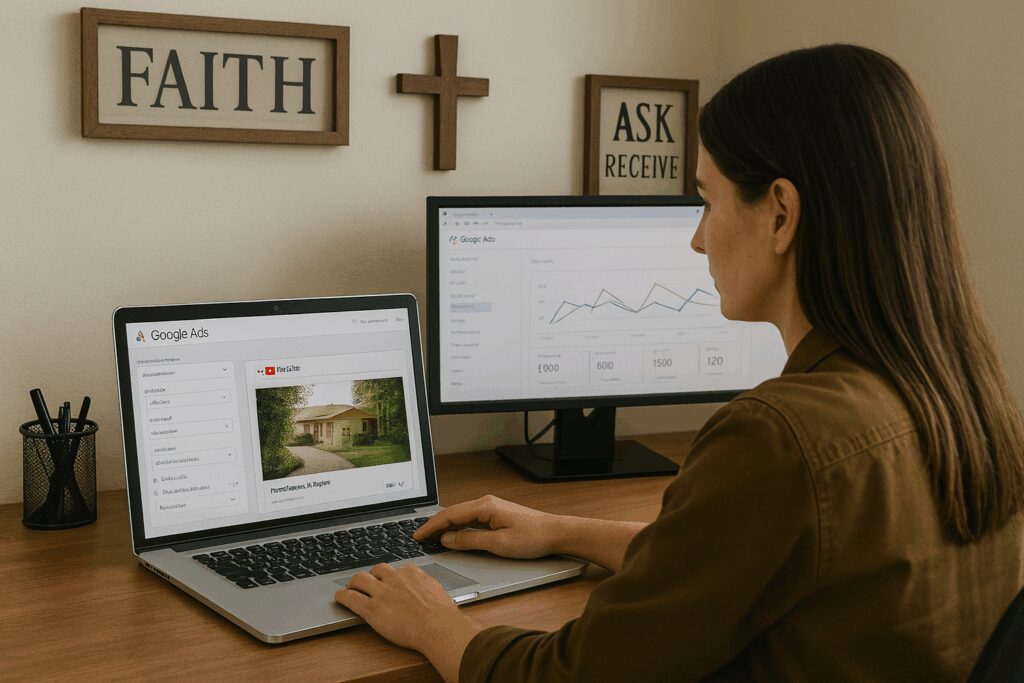
Choose the Right Video Ad Format
Once you’ve selected your platform(s), you need to decide what type of video ad format you will use. Different formats are designed for different attention spans and objectives, and using the right mix can increase both engagement and recall. Your goal is to match the format with your message so that your video feels natural, engaging, and timely to the viewer.
Each format has its strengths:
- Skippable in-stream ads: Best for storytelling with a clear call to action (15–60 seconds).
- Non-skippable ads: Good for brand awareness, but should be kept under 15 seconds.
- Bumper ads: Short (6-second) ads for broad reach and repetition.
A smart campaign often includes a variety of formats, layered to reach your audience across different points of their decision journey. For example, use a 30-second story-driven video followed by shorter bumper ads to reinforce the message.
Define Your Audience
Even the most beautifully produced video won’t make an impact if it’s not shown to the right people. Defining your audience is a critical step in deploying video ads, and thankfully, modern ad platforms give you powerful tools to do so. Whether you’re targeting youth pastors, event planners, or local families, you can zero in on the most likely guests for your retreat or event.
Each ad platform offers different targeting tools:
- Google Ads (YouTube): Interests, life events, search behaviors, and custom segments
- Meta Ads (Facebook/Instagram): Location, demographics, page engagement, video views, interests
- Programmatic Platforms (Streaming/TV): Household targeting, geographic filters, content relevance
Audience targeting isn’t just about demographics—it’s about behavior, context, and intention. The more you understand about your ideal guest, the better you can target them with messaging that resonates and invites them to take the next step.
Create Compelling Video Content
This is where your message comes to life. Compelling video content doesn’t just show your property—it tells a story. A great video communicates not just what you offer, but why it matters, and why someone should take time out of their schedule to experience it.
Quality matters, but authenticity is just as important. Keep these principles in mind:
- Use real guests and staff to build trust
- Showcase the setting, atmosphere, and purpose of your events
- Keep it short (15–60 seconds), and end with a call to action (“Learn More,” “Plan Your Visit,” etc.)
- Use professional videography if possible, but modern smartphones with good lighting can work
Remember, your video doesn’t have to be perfect—it just has to be real, inviting, and aligned with your mission. One well-made video can be repurposed across ads, social media, and your website.
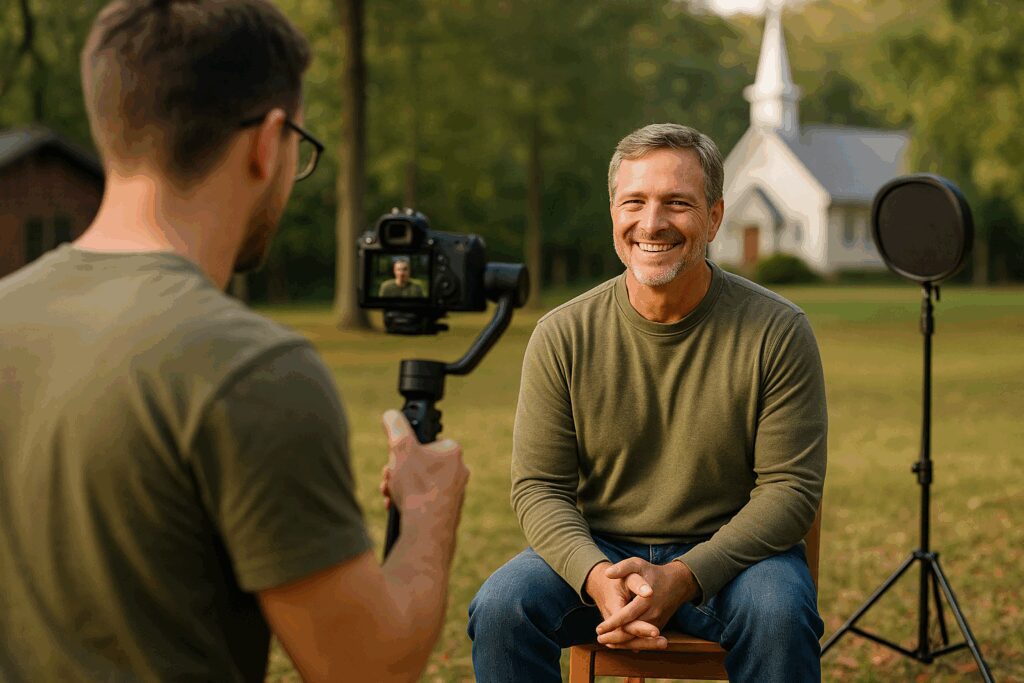
Set Campaign Goals and Metrics
Without clear goals, it’s difficult to know if your campaign is working. Setting objectives and tracking metrics from the beginning helps you focus your efforts, allocate your budget wisely, and adjust quickly when needed. Good goals are specific, measurable, and tied to your broader mission.
Define what success looks like:
- View rate: What percentage of viewers watched your video
- Cost per view (CPV): How much you’re paying for each view
- Branded traffic: Increases in searches or direct visits to your website
- Conversions: Clicks, inquiries, or bookings from those who saw your ad
Track these weekly and adjust accordingly. Run A/B tests to compare different creatives, messages, and audiences. Rotate your videos regularly to keep your content fresh and engaging. With a little time and attention, you’ll begin to see patterns that guide smarter decisions.
Launch and Optimize Your Campaign
Launching your campaign is just the beginning. The real value comes from watching how it performs and making changes to improve results. Optimization isn’t about perfection—it’s about continuous improvement. By adjusting your message, visuals, or audience targeting, you can increase your impact without increasing your budget.
Start small. Test different videos, headlines, and audiences. Run A/B tests to compare results and refine your campaigns. Allocate more budget to what works, and pause what doesn’t. Optimization is where results improve over time.
Retarget viewers who engaged with your video or visited your site using follow-up ads that remind them to take action. If your ministry values brand safety, make sure to set placement exclusions in Google Ads or work with a partner who understands how to ensure your videos appear in contextually appropriate environments.
Even small refinements can lead to better engagement, lower costs, and more bookings. Track, learn, and repeat.
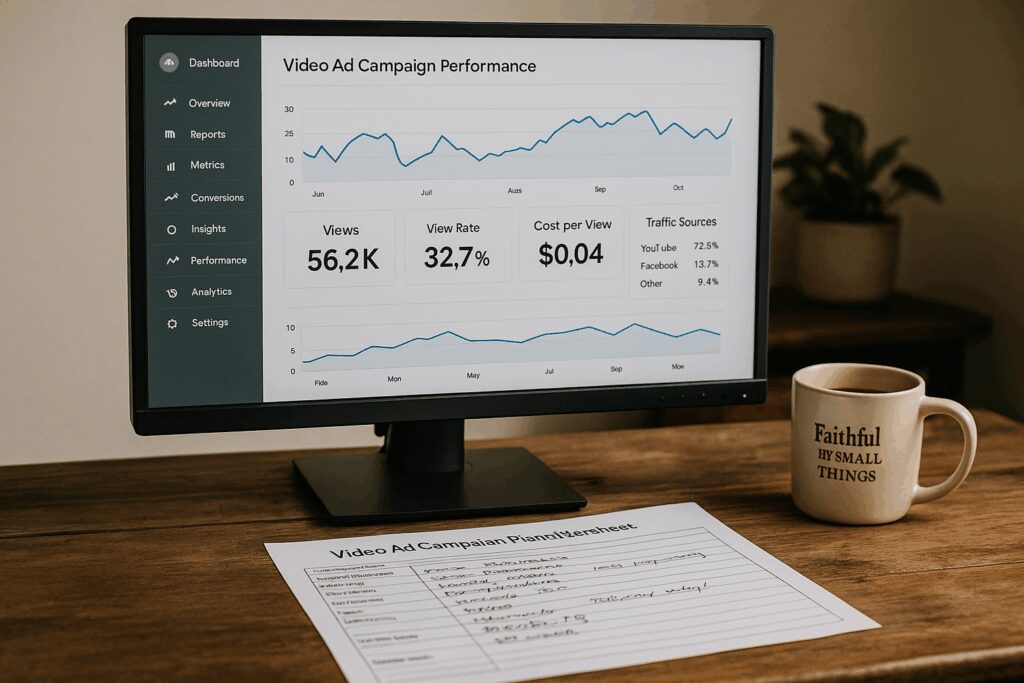
Video Ad Campaign Planning Worksheet
Planning a video campaign doesn’t have to be overwhelming. This simple, practical worksheet will help you think through every important element of your video ad strategy—before you hit publish.
Use it to:
- Clarify your campaign purpose and audience
- Write your messaging and creative plan
- Choose platforms, video formats, and placements
- Set your budget and measure success
📥 Download the Video Ad Campaign Planning Worksheet
Whether you’re launching your first video ad or refining a growing campaign, this worksheet will give you the clarity and confidence to move forward. It’s designed to support you in building a campaign rooted in stewardship, creativity, and mission-alignment.
Mini Case Study
A Christian retreat center wanted to raise awareness for their seasonal community events. They hired a professional videographer to capture joyful scenes of staff and guests enjoying the experience. Using both YouTube ads (via Google Ads) and programmatic placements (like Hulu and Roku), managed through the Vibe Marketing platform, they launched a multi-channel campaign.
The campaign delivered:
- Strong engagement with above-average view rates
- Low cost per view
- A measurable increase in branded website traffic
- A significant uptick in Fall event bookings
Video helped this retreat center break through seasonal visibility challenges and attract new local families to their ministry.
Putting It All Together
Video ads are a powerful, practical way to extend your reach, fill your calendar, and build deeper connections. Even with limited resources, you can:
- Start with short, authentic videos
- Use Google Ads to reach the right people
- Measure results and improve over time
- Expand to social media and streaming platforms as your strategy matures
- Manage multi-platform campaigns with tools like Vibe Marketing
- Invite new audiences into your ministry
- Repurpose videos on social media and your website to extend their impact
Don’t wait for perfect conditions. Start where you are, and grow from there.
Ready to Take the Next Step?
Deploying video ads is one of the most powerful ways to extend your reach and connect new people to your mission. It doesn’t have to be complicated—and you don’t have to do it alone.
If you found this helpful, here are four great next steps to continue your journey:
🧭 Move to the Next Focus Area:
Explore the entire series of retreat & camp growth roadmap articles and pick your next area of focus to learn about.
[Read Retreat & Camp Growth Roadmap Summary Article]
📘 Download the Retreat & Camp Growth Roadmap eBook
Get the full 3-stage system we use to help retreat centers and camps grow with clarity and purpose.
[Download the eBook]
🌱 Learn More About How We Help Retreat Centers & Camps
We’re a Christian-owned digital marketing agency that helps retreat centers and camps grow attendance, bookings, and impact through practical strategies rooted in clarity and stewardship.
[See How We Can Help]
🤝 Schedule a Free Discovery Call
Want help applying this to your unique situation? Let’s talk. We’ll explore where you are now, where you want to go, and how to take the next faithful step.
[Book a Discovery Call]
You don’t have to figure this out alone. Let’s build something meaningful—together.
Frequently Asked Questions
Do I need a professional videographer to create video ads?
No—but quality matters. A professional can save time and deliver polished results. That said, many effective ads are filmed with smartphones, natural lighting, and a clear message.
Should I use an agency to manage my video ad campaigns?
If you’re running multi-platform campaigns or lack in-house expertise, a PPC agency can help you avoid costly mistakes and maximize ROI. Look for one with experience in christian camp marketing or retreat center promotion.
Which platforms should I run video ads on?
Start with YouTube via Google Ads for affordability and precision targeting. Then consider expanding to streaming platforms like Hulu using tools like Vibe Marketing, which streamline campaign management.
How much should I spend on video ads?
Start small—even $10–20/day can give you good data. Scale up based on performance, season, and availability.
What kind of video content works best?
Short videos (15–60 seconds) showing real guests, smiling faces, peaceful spaces, and your mission in action.
How do I know if it’s working?
Track view rates, branded search volume, website visits, and inquiries. Over time, you should see an increase in engagement and bookings.
Can video ads help with seasonal events?
Yes. They’re perfect for highlighting Fall festivals, Christmas lights, or special retreats.
How long should my video ads be?
Most effective ads are 15–30 seconds. Use bumper ads (6 seconds) for awareness and longer videos (up to 60 seconds) for storytelling.
Can I reuse videos across platforms?
Yes, with minor edits for length and format. Plan ahead to film content that works in multiple sizes and versions.
Is it worth advertising if we’re already booked up?
Yes. Video ads build long-term brand visibility and help you fill off-season or midweek slots. They also prepare you for future outreach.
How much time will this take to produce and manage?
It depends on your approach. Simple DIY videos can be produced in a day or two, while professional shoots may take a few weeks from planning to completion. Campaign management can be handled in-house or outsourced, depending on your team’s capacity and goals.

